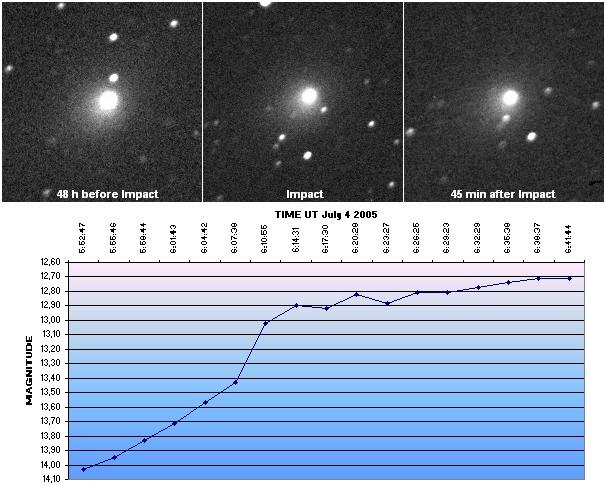
Credit & Copyright: Scott and Justine Loucks, LAMP Observatory

Scott Loucks took the above images, together with his daughter Justine, at his LAMP ("Loucks Astrometry of Minor Planets") observatory near Phoenix, Arizona, using a Celestron 11 Schmidt-Cassegrain telescope operating at f/3.2, and a SBIG ST-402ME CCD-camera. The images have been stacked to track the comets motion of 1.48"/minute, and the total exposure of each frame is 300 seconds. Regarding the pre-impact frame, Loucks writes: "We had a very close wild fire during that time and I think the smoke was causing havoc on my imaging". Fortunately, conditions were better on July 4, but Loucks notes: "I cannot tell any substantial 'visual' difference between the frames". However, below the images is a lightcurve, starting at the time of the impact, and clearly showing a 1.3mag increase in brightness of the comet over 50 minutes following the impact. After that time, the comet dropped below the horizon, so Loucks was forced to stop observations. These unfiltered magnitudes of the central condensation were measured with Astrometrica using a aperture of 35", and USNO-B was used as reference star catalogue.